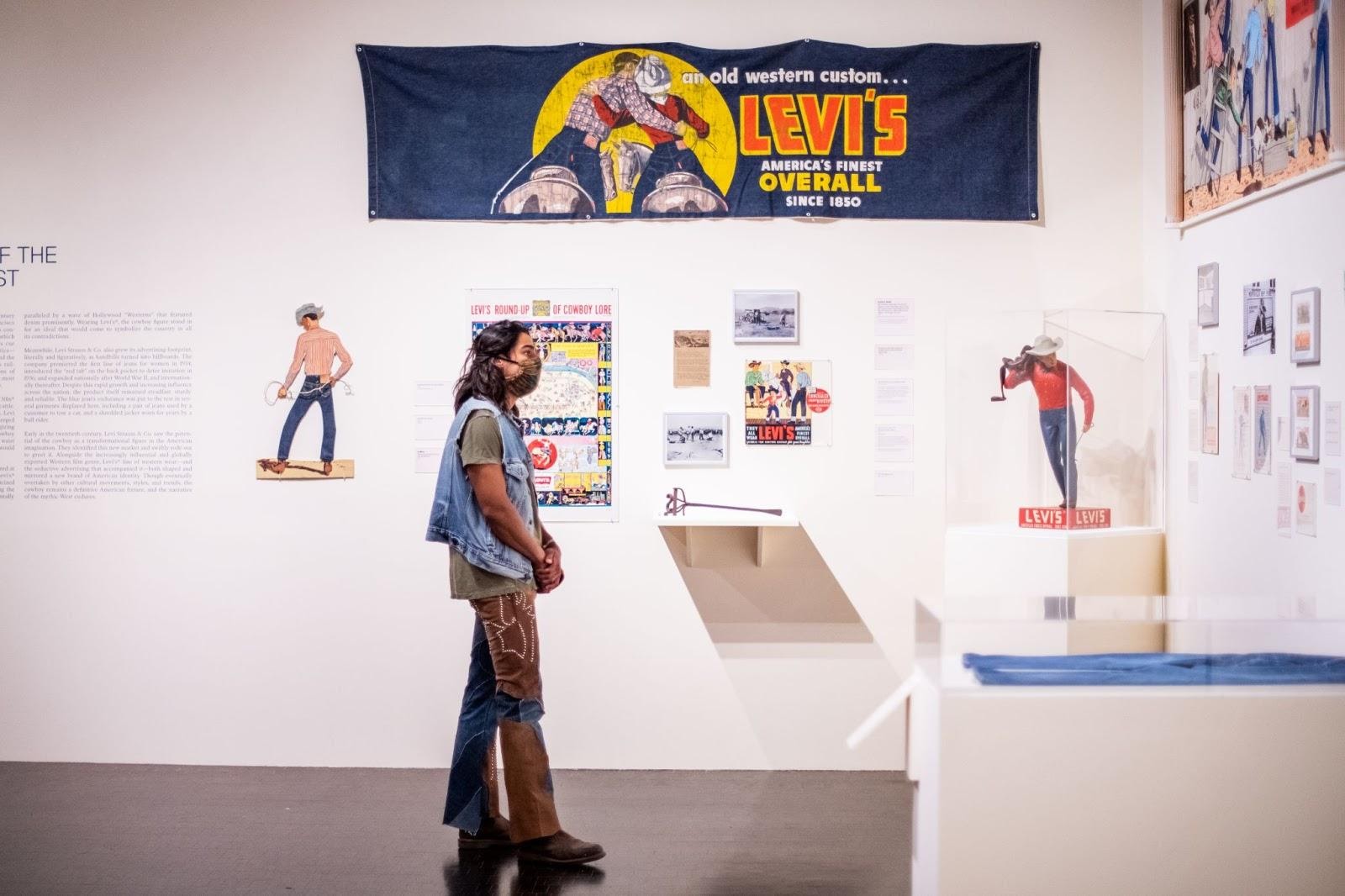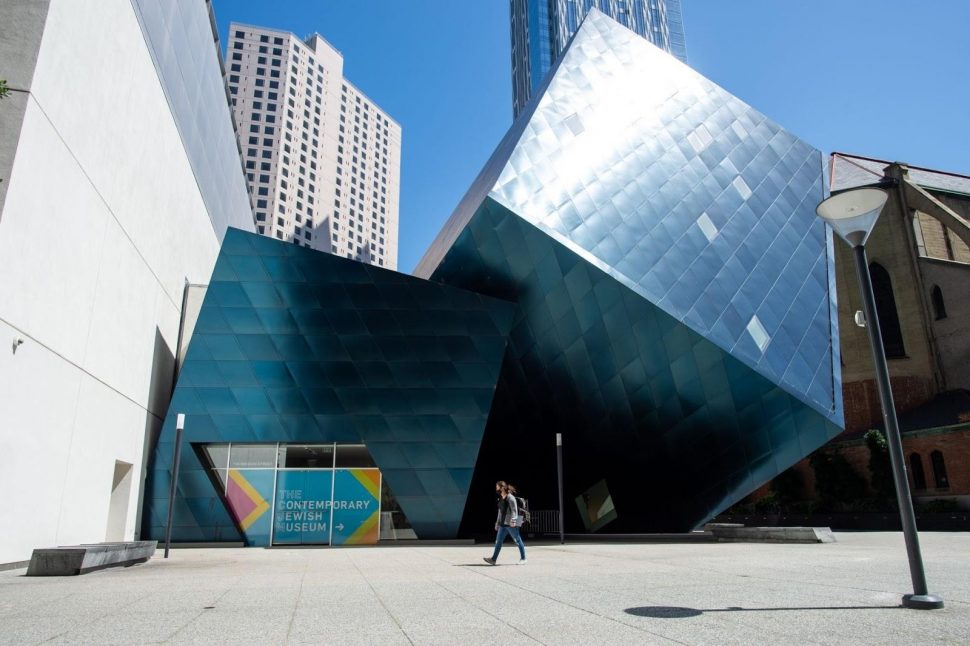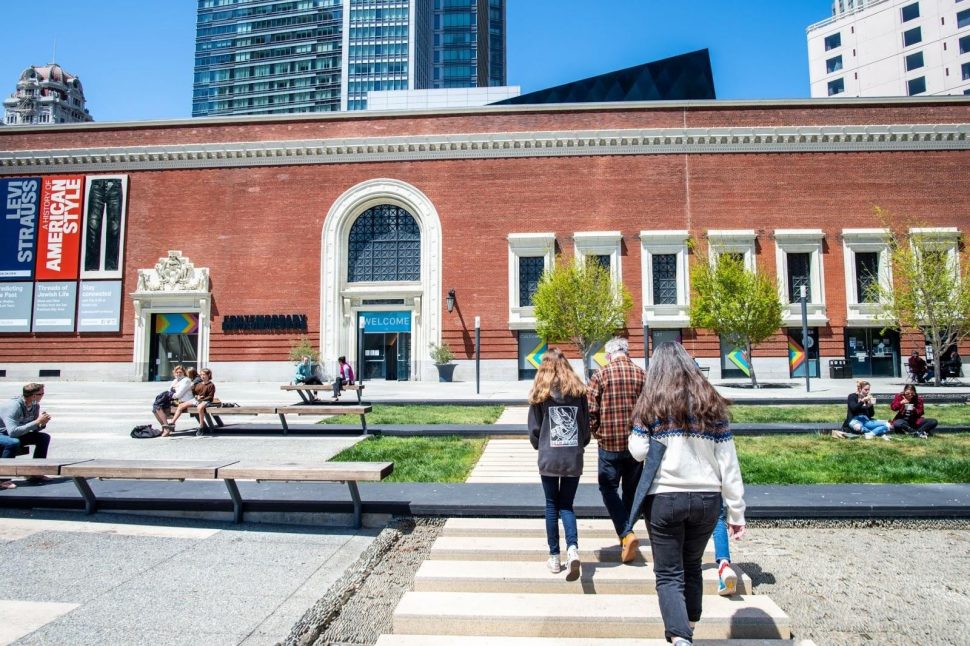
Celebrating Jewish American Heritage Month with the Contemporary Jewish Museum
In honor of Jewish American Heritage Month, Carbon Five has been amplifying and celebrating voices from the Jewish community throughout May. We caught up with our friends at the Contemporary Jewish Museum (CJM) — a past Carbon Five client — to learn more about how Jewish Americans have influenced Bay Area culture, how the pandemic has changed the way the museum operates, and how Carbon Five’s work has helped the CJM navigate the pandemic.
Carbon Five: What is Jewish American Heritage Month and why is it important?
CJM: Jewish American Heritage Month is a time to reflect on the contributions of the Jewish community in the United States and how that history has influenced our present moment. At the CJM, our mission is to be an engaging forum for diverse audiences where Jewish perspectives on culture, history, art, and ideas can thrive — this is really our core work and something we’re always doing. Jewish American Heritage Month is one month when the wider community is focused on these topics, but it’s something we do every month out of the year.
How is the CJM celebrating Jewish American Heritage Month?
We’re celebrating it through our exhibitions and programs. We have an ongoing series called “Sunday Stories,” which explores art, history, and pop culture through a Jewish lens. Sometimes the stories are related to our current or past exhibitions, and sometimes they’re just amazing stories about Jewish history in the United States. One story that we explored this month was about the Jewish chicken ranchers of Petaluma — there’s an incredibly rich history of a progressive community of chicken ranchers in that area. That story premiered in mid-May and is now available on the CJM Facebook page.
Another way we’re celebrating Jewish American history is through our exhibition, “Levi Strauss: A History of American Style,” which traces the history of the birth of the blue jean and Levi Strauss and Co., named for its founder, who was a Bavarian Jewish dry goods merchant in San Francisco. The exhibition tells the story of how the company evolved from its origins in Gold Rush-era California to the global phenomenon that we know today and how the brand has helped to define American style.
There’s a portion of the show dedicated to exploring Levi Strauss’ life, including his contributions as a philanthropic figure in San Francisco. He was incredibly influential not only to the Jewish community here, but also to the community at large as well.
How else have Jewish Americans shaped the culture of San Francisco?
One of the most incredible local stories is about Bill Graham. He was a German Jewish refugee who moved to San Francisco by way of New York and ultimately became one of the most important rock concert promoters in the 1960s — and we still see his name all over the city today. Graham’s work and life were deeply influenced by his connection to Judaism. In fact, he collaborated with partners from Chabad and KQED to organize the first large-scale public Hanukkah menorah lighting in the United States, which has become a tradition in cities around the world.
Also, although he hailed from Montreal Canada, the legendary singer/songwriter Leonard Cohen is another figure who is deeply beloved in the Bay Area, and has had a profound impact on art and culture here. San Francisco is home to the annual Leonard Cohen Festival and to the Conspiracy of Beards, a 30-member male choir that performs a cappella arrangements of Cohen’s songs, to name a few ways Cohen’s work lives on here. This fall, the CJM is presenting an exhibition series called Experience Leonard Cohen, which explores his life and legacy through four immersive exhibitions of contemporary art. We’re excited to welcome visitors to an opening celebration for Experience Leonard Cohen on September 19.
How can people support the Bay Area Jewish community, and the greater Jewish community in the U.S.?
At the CJM, we encourage our visitors to immerse themselves in different perspectives and untold histories. The Jewish community is diverse and learning about parts of Jewish culture and history that you might not have been exposed to is a great place to start. One way to do that is to attend programs and exhibitions at the CJM and other Jewish institutions.

The Contemporary Jewish Museum is located at 736 Mission St in San Francisco. Photo courtesy of the Contemporary Jewish Museum
How has the programming at the CJM changed during the pandemic, and what’s the state of the museum today?
The pandemic has changed the way we do so many things! We were closed for an extended period of time, but we were able to reopen our doors to the public on April 17.
One of the things that the pandemic has challenged us to do is invest more time and energy into our digital programs and digital content. We’ve been able to connect with an incredibly broad audience across the United States and the world, particularly through our “Sunday Stories,” the visual lecture series I mentioned previously that explores Jewish culture. Our digital programs have included stories from the culture of the Catskills Mountain resorts in the 1950s, to the story I mentioned about Bill Graham and his influence in San Francisco.
Through our online programming, we’ve been able to dig deeper into some of those stories in a format that allows us to share them more broadly and connect with folks that live outside of the Bay Area or who may not be able to come to the museum in person. We have been so inspired by how much our online community has grown. We’ve also explored presenting some of our exhibitions in an online format, which is something we’ve never done before and has been well-received by our audiences, especially during the shelter-in-place, when folks were really hungry for arts and cultural experiences.
“From both the storytelling and institutional archive standpoint to the practical nuts and bolts side of what it meant to reopen our doors, our partnership with Carbon Five has been so important.”
Do you plan to continue some of these digitally focused activities? Will the CJM look much different post-pandemic than it did pre-pandemic?
It will, without a doubt. While the pandemic has changed the shape of what we do in certain ways, we’ve retained the core parts of who we are and we’ll still continue to do many of the things we did before the pandemic.
One example of this new digital and in-person hybrid art experience is a new exhibition that opened online in March and is opening in person on June 24, called “Golem: A Call to Action.” It’s a three-part exhibition by a Los Angeles-based artist named Julie Weitz, comprising three separate artworks that have premiered in line with different holidays — the first was Passover, the second was Earth Day, and the one coming up is the summer solstice. The works in the exhibition draw on Jewish allegory, folklore, and spiritual practice to inspire action around social justice, progressive wildfire management, and other ecological issues.
The exhibition was designed with the intention that it would premiere online first while the museum was still closed. The first piece actually premiered on our Instagram. We’ve never done something like that before, and it was a really interesting way to use a tool that we use every day in a completely new way.
In June, we’re going to be opening a new gallery space in the museum that will be free to the public and we’ll be using it to screen two of the works in this exhibition. People around the world will be able to watch the full artworks online, and those who are able to visit the museum can experience our new Black Box Gallery and view the work in person. This project highlights the way our thinking has evolved around how art can be presented given the constraints that we’ve all experienced this past year.

The Contemporary Jewish Museum reopened its doors to the public April 17, 2021. Photo courtesy of the Contemporary Jewish Museum
In 2016, Carbon Five and the CJM worked together to help develop a new website and a mobile app for the museum. Have either of these tools helped the CJM navigate the pandemic and the shift to a more digital focus?
Without a doubt. When our doors were closed to the public, our focus shifted to sharing the wealth of stories in our archive, and we relied on the website to showcase the storytelling projects we’ve done. Many of our public programs and education programs have been archived there, and in the beginning of the pandemic we curated a variety of educational content, and content from our past programs, as well as fun, beautiful images. In the early months of the pandemic, when everyone desperately wanted a cultural connection, the website enabled us to have a rich, visually interesting archive for each of the exhibitions we’ve done in the past. From a storytelling sense, it was absolutely critical.
In addition to that project, we partnered with Carbon Five again this past year as we were preparing to reopen to help us adapt to the requirements of social distancing. In the past, most people bought their tickets on-site, but it was important to us to be able to offer contactless ticketing going forward. The updates we made brought the system in line with our brand and created a seamless user experience.
The project with Carbon Five to improve our current ticketing system, enabled us to roll out an incredibly smooth and easy process for booking tickets online that allows people to come to the museum and have a contactless experience. We’re now seeing most tickets purchased online. From both the storytelling and institutional archive standpoint to the practical nuts and bolts side of what it meant to reopen our doors, our partnership with Carbon Five has been so important.
How can people learn more about the CJM?
Follow us on Instagram and Twitter at @jewseum and on Facebook @TheCJM. If you’d like to visit us in person, please visit us at thecjm.org/tickets to book tickets.